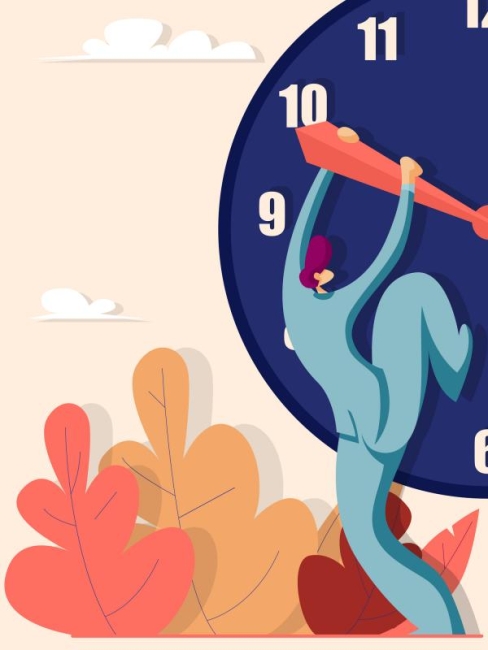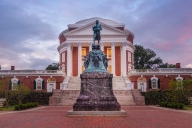You have /5 articles left.
Sign up for a free account or log in.

nikolos/istock/getty images plus
As we begin the spring semester, the coronavirus pandemic continues to rage and worsen. It’s thus time for higher education to stop treating COVID-19’s impact on faculty careers as primarily a time-management problem, one that can be handled through clock extensions and other short-term interventions. Especially at research-oriented universities, responding effectively to the upheaval resulting from COVID-19 will instead require both institutions and faculty members to reimagine long-term policies and structures that define productivity, tenure and promotion. How institutions of higher education respond to this upheaval is crucial for their futures.
The pandemic’s impacts on faculty research have been increasingly well documented, both in nationwide studies and on the ground. For more than 10 months, faculty have encountered canceled conferences and shuttered galleries, navigated lab closures and new safety protocols for reopening, and restructured fieldwork and professional leaves. At the same time, the rapid transition to online or hybrid teaching, K-12 school closures, and increased care responsibilities have imposed on faculty new and relentless demands, further restricting if not eliminating the time and energy available to research. These latter demands often fall disproportionately on women and faculty of color, amplifying and deepening inequities, especially in service and teaching, that have long persisted in higher education.
Responding to these challenges, more than 250 colleges and universities to date have announced some form of one-year extension to their tenure and promotion processes. Yet while providing early-career faculty members immediate and necessary relief, the efficacy of clock extensions may be limited by field, with researchers working with human subjects facing potentially much longer delays in their work. These well-intentioned adjustments have also been criticized for their potential impacts on career development, standing in the profession and long-term earning power. They also support only a comparatively small number of faculty, leaving aside the much broader impact of the pandemic on the research, scholarship and creative activity of all faculty.
Relying primarily or solely on tenure clock extensions also fundamentally misunderstands the coronavirus pandemic as a problem of time. The assumption that institutions and individuals could weather the initial stages of COVID-19 and then return to normal operations is no longer tenable, especially as faculty continue to make choices -- what courses to design, what grant opportunities to pursue or abandon, what work must be completed or neglected -- that will have significant downstream effects. At the same time, while new treatments have tempered the worst health consequences of the virus, they do not address its spread, and for many people, the consequences of infection remain debilitating. Even as access to vaccines becomes imminent, uncertainty remains about their availability and widespread deployment, as well as what measure of relief they can quickly deliver for institutions and faculty members.
The coronavirus pandemic also cannot be seen in isolation from other challenges to faculty research, scholarship and creative activity. Scholars in multiple disciplines have long voiced concerns over the lack of public and institutional funding for both basic and applied research, as well as the acceleration of quantitative expectations for advancement. University presses and journals, key outlets for meeting these increased expectations, continue to face their own often-existential threats. Competition for grant funding, another key measure of faculty advancement, has become similarly fierce. Funding also follows success, leaving established labs better positioned in these crises and disadvantaging early-career researchers -- precisely the individuals clock extensions are meant to support.
To borrow a medical analogy, the academic research enterprise is a patient with multiple pre-existing conditions that, when confronted with a public health crisis, needs more than just time to rest. As early as last summer, commentators recognized the insufficiency of tenure-clock extensions, but few institutions have begun openly considering -- much less implementing -- changes to policies and procedures that might enable a wider range of researchers and their work to survive over the long haul.
What follows then are a series of specific suggestions, organized from least to most radical, to begin these conversations. Similar suggestions could -- and should -- be developed for faculty teaching and service responsibilities, recognizing throughout that the pandemic poses for some individuals within and outside academe more fundamental and existential threats to their health and livelihoods. The research-focused ideas below are designed to raise questions that academics should discuss not just at the department level but also at the college and provost level, where faculty can collaboratively re-examine disciplinary assumptions and policy changes can have substantial institutional effects.
Eliminate comparisons between institutions and individuals. External reviews are regularly accompanied by an assessment as to whether the candidate would receive tenure at the letter writer’s institution or how the candidate compares to other specific individuals in the field. Such comparisons rely upon the expectation that resources and workloads are roughly equivalent across similar institutions -- an assumption that was false in the best of times and is increasingly unsustainable as faculty confront differentiated case rates, reopening plans and budget impacts on their campuses. Such comparisons also implicitly posit an idealized individual, making it harder to recognize -- much less account for -- the additional challenges faculty of color and women face. If comparisons are necessary, consider the “Achievement Relative to Opportunity” model that several Australian universities are adopting.
Reduce the reliance on purely quantitative measures of productivity. Academe frequently measures progress toward tenure and/or promotion by quantitative assessments, such as the number of publications, h-indexes and impact factors, even as it has long debated the validity and usefulness of these measures. In the midst of a pandemic, however, we must recognize that these metrics also rely upon the unacknowledged work of reviewers, many of whom are now being encouraged by their universities or obliged by their own circumstances to limit or decline such service. (A similar problem may impact the grant reviews that can provide faculty members with the necessary funding for their research.) The potential for delayed reviews and publications will inevitably degrade quantitative measures of productivity, yet the resulting decreases will say less about the content or potential impact of a scholar’s work than the circumstances of its publication.
Embrace the local/regional with the national/international. Research universities have long valued national and international reputation as a key marker of success. Yet some of the most ambitious research, such as the University of California, Los Angeles’s commitment to a sustainable Los Angeles County, is deeply invested in local engagement. Indeed, for their own survival, both public and private universities are increasingly recognizing the importance of faculty expertise in also serving the needs of local or regional communities. Building the local networks that make such research possible, however, is rarely acknowledged in current promotion standards, which more frequently account for such work as service. An important first step to widening the scope of “reputation” in this fashion would be for universities to follow the lead of Indigenous scholars and take seriously the sovereign status of Native American and First Nations tribes, and in doing so recognize sustained work with these communities as meeting an international standard.
Expand the range of materials that “count” as scholarly products. At the same time as traditional outlets for scholarship and creative activity are under pressure, a growing number of scholars across our disciplines have realized the need and desire for greater public engagement. Such engagements can yield outputs like policy papers, K-12 interventions, extension activities and community partnerships that are substantially different than articles or monographs. At Washington State University, our College of Arts and Sciences now explicitly recognizes such interdisciplinary and public work as research while simultaneously acknowledging that faculty members who work in these areas may have substantially different career trajectories. Even more robust is the universitywide system for evaluating community research at the University of Minnesota, which provides for an informed, independent review committee to assess such work and inform tenure and promotion committees as to its value.
Permit individualized tenure and promotion timelines. Like any standardizing measure, the six-year tenure and promotion clock exerts a powerfully narrowing effect, directing faculty into well-established forms of research and scholarship while simultaneously discouraging innovation, risk and engagement with nonacademic communities. Patterns established at the start of one’s appointment can also define careers, as any faculty member who has sought to substantially shift their research interests or fields knows only too well. We should consider instead timelines developed in mutual conversation and reflecting the particular demands of a faculty member’s research, its relationship to the institution’s mission, and jointly agreed-upon outcomes. The rapidity with which colleges and universities across the nation altered the strictures of the promotion clock in the early days of the pandemic should encourage us to imagine what benefits a more thoughtfully tailored approach to faculty career progression might yield.
To be sure, not all of these ideas are new, a fact that reinforces the conclusion that the coronavirus pandemic is part of much greater and long-standing challenges to scholarly and creative activity. Yet the spread of COVID-19 has also brought distinct pressures upon these challenges, making institutional rethinking more important than ever. That rethinking will also require institutions to make targeted investments in faculty members that support these new approaches.
Pursuing this goal, however, will also require that individual faculty widen their own scope of what a successful research career might entail. This task may be particularly challenging for those of us who have succeeded in meeting the traditional expectations of our disciplines, for we frequently naturalize those expectations and, through well-meaning advice, impose them on others. Reimagining amid a pandemic will thus also require us to mentor differently, to learn new ways of evaluating what we think of as scholarship and to accept -- if not encourage -- career timelines, methodologies and outputs different from our own.
Organizational change is challenging even in nonpandemic times. Institutional policies reflect structures designed at the time of their founding, and change can imply that long-standing practices -- and the faculty who have followed them successfully -- are in some way “wrong.” Yet none of the suggestions above abandons our research mission. Rather, they widen and update it, disentangling stress-inducing and time-bound measures of “productivity” from the foundational intellectual ambitions that drive faculty members -- to inquire, to create and to make a difference with what we learn.




